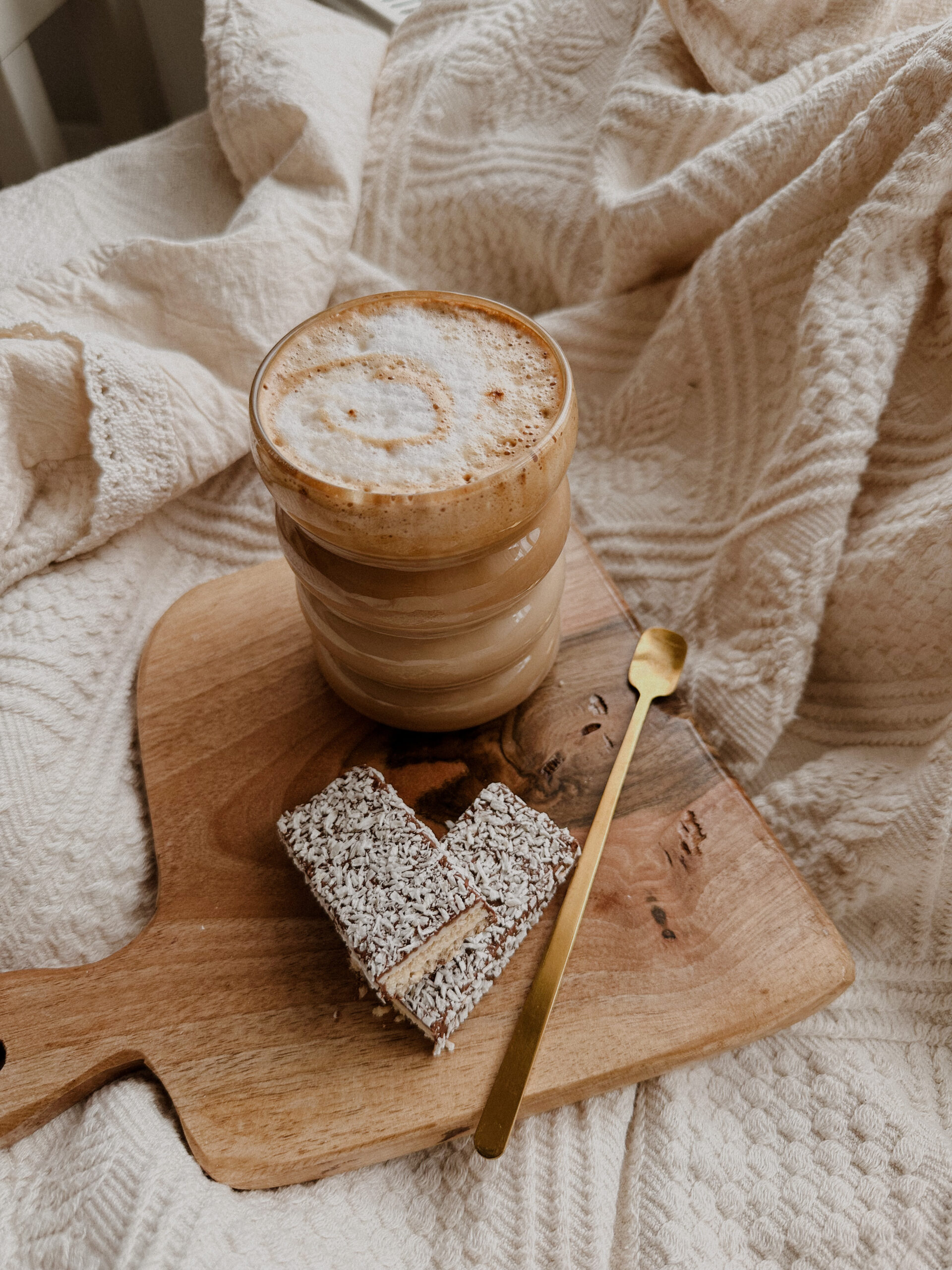Indulge in the delightful world of classic Italian desserts with tantalizing treats like Tiramisu, Cannoli, and more. At Tastepan.com, we bring you a treasure trove of mouthwatering recipes that will transport you to the streets of Italy. Whether you’re a novice in the kitchen or a seasoned chef, our step-by-step instructions, ingredient lists, and expert tips will ensure your culinary adventures are filled with delectable flavors and irresistible desserts. From the silky layers of Tiramisu to the crispy shells of Cannoli, allow us to be your guide as we explore the irresistible sweetness of these timeless Italian creations. Get ready to satisfy your sweet tooth and embark on a culinary journey that will leave you craving for more.

Classic Italian Desserts: Tiramisu, Cannoli, and More
Italy is known for its rich culinary traditions, and when it comes to desserts, it truly shines. From the creamy and decadent Tiramisu to the crispy and sweet Cannoli, Italian desserts have captured the hearts and taste buds of people all over the world. In this article, we will explore some of the most beloved traditional Italian desserts and learn how to make them at home. So put on your apron and get ready to indulge in the irresistible flavors of Italy!
1. Tiramisu
1.1 History of Tiramisu
Tiramisu, which means “pick me up” in Italian, is a classic Italian dessert that dates back to the 1960s. Its origins are disputed, with several regions in Italy claiming to be the birthplace of this delectable treat. One popular theory suggests that Tiramisu was invented in the region of Veneto, while others believe it originated in the region of Friuli Venezia Giulia. Regardless of its precise origin, Tiramisu quickly gained popularity and became a staple in Italian cuisine.
1.2 Ingredients for Tiramisu
The ingredients for Tiramisu are simple yet delicious. You will need:
- Savoiardi ladyfingers
- Strong brewed coffee or espresso
- Mascarpone cheese
- Eggs
- Sugar
- Cocoa powder
1.3 Making Tiramisu
To make Tiramisu, start by brewing a strong cup of coffee or espresso. In a bowl, whisk together egg yolks and sugar until pale and creamy. Add mascarpone cheese to the mixture and whisk until smooth. In a separate bowl, beat egg whites until stiff peaks form. Gently fold the egg whites into the mascarpone mixture.
Dip each ladyfinger into the coffee or espresso briefly and arrange them in a single layer in a serving dish. Spread half of the mascarpone mixture on top of the ladyfingers. Repeat the process with another layer of dipped ladyfingers and the remaining mascarpone mixture.
Refrigerate the Tiramisu for at least 4 hours to allow the flavors to meld together. Before serving, dust the top with cocoa powder for an added touch of elegance.
1.4 Variations of Tiramisu
While the classic Tiramisu recipe is a beloved favorite, there are several variations to explore. Some popular variations include:
- Fruit Tiramisu: Add layers of fresh berries or other fruit between the ladyfingers for a refreshing twist.
- Chocolate Tiramisu: Incorporate melted chocolate into the mascarpone mixture for a rich and indulgent chocolate flavor.
- Nutella Tiramisu: Replace the cocoa powder with a drizzle of Nutella for a creamy and chocolatey twist.

2. Cannoli
2.1 Origin of Cannoli
Cannoli, another iconic Italian dessert, originated in Sicily. Its name is derived from the word “canna,” which means “reed” in Italian, referring to the shape of the pastry. Cannoli were traditionally prepared for special occasions and celebrations, and today they are a culinary delight enjoyed all year round.
2.2 Traditional Cannoli Ingredients
To make cannoli, you will need:
- Flour
- Sugar
- Butter
- Marsala wine or rum
- Cocoa powder
- Ricotta cheese
- Powdered sugar
- Candied fruit or chocolate chips
2.3 Making Cannoli Shells
Making cannoli shells may seem intimidating, but with a bit of practice, it can be a rewarding experience. Start by combining flour, sugar, and butter to form a dough. Add Marsala wine or rum to bring the dough together. Roll out the dough and cut it into circles.
Wrap each circle around a cannoli tube or a cylindrical object, sealing the edges with a brush of egg wash. Fry the shells until golden brown and crispy. Once fried, carefully remove the shells from the tube and let them cool completely.
2.4 Filling for Cannoli
Cannoli shells are only the beginning – the filling is what truly makes them special. To make the filling, mix ricotta cheese and powdered sugar until smooth and creamy. Add a sprinkling of cocoa powder for a touch of chocolate flavor. Fold in candied fruit or chocolate chips for added texture and sweetness.
When you are ready to serve, fill the cannoli shells with the ricotta mixture using a piping bag or a spoon. Dust the tops with powdered sugar and enjoy the delightful crunch and creamy filling of these iconic Italian pastries.
3. Panna Cotta
3.1 What is Panna Cotta?
Panna Cotta, which translates to “cooked cream” in Italian, is a creamy and luscious dessert that originated in northern Italy. It is a simple yet elegant dessert that is loved for its silky texture and delicate flavor. Panna Cotta can be served on its own or paired with a variety of sweet sauces and fresh fruits.
3.2 Ingredients for Panna Cotta
To make Panna Cotta, you will need:
- Heavy cream
- Sugar
- Gelatin
- Vanilla extract
3.3 Making Panna Cotta
To make Panna Cotta, start by blooming gelatin in cold water. In a saucepan, heat the cream and sugar until it starts to simmer. Remove the mixture from heat and add the bloomed gelatin, stirring until dissolved. Stir in vanilla extract for added flavor.
Pour the mixture into serving dishes or molds and refrigerate for at least 4 hours, or until set. Once set, the Panna Cotta is ready to be enjoyed.
3.4 Flavor Variations of Panna Cotta
While classic vanilla Panna Cotta is delightful on its own, there are endless possibilities for flavor variations. Here are a few ideas to inspire your creativity:
- Chocolate Panna Cotta: Add cocoa powder or melted chocolate to the cream mixture for a rich and velvety chocolate Panna Cotta.
- Berry Panna Cotta: Macerate fresh berries with sugar and a splash of lemon juice. Layer the berry mixture on top of the Panna Cotta for a burst of fruity goodness.
- Salted Caramel Panna Cotta: Drizzle homemade salted caramel sauce on top of the Panna Cotta for a sweet and salty treat.
With its creamy texture and endless flavor options, Panna Cotta is a versatile dessert that will impress your guests and leave them wanting more.

4. Gelato
4.1 Introduction to Gelato
Gelato, the Italian word for “ice cream,” is a frozen dessert that has been delighting taste buds for centuries. What sets gelato apart from traditional ice cream is its lower fat content, resulting in a denser and more intense flavor. Gelato is enjoyed all year round in Italy, with an array of flavors that cater to every palate.
4.2 Traditional Gelato Flavors
When it comes to gelato flavors, the options are seemingly limitless. However, there are a few classic flavors that are a must-try:
- Stracciatella: This flavor features creamy vanilla gelato with fine chocolate shavings throughout, creating a delightful mix of textures.
- Pistachio: Made with crushed pistachios, this nutty gelato is a popular choice among gelato lovers.
- Lemon: Bursting with tangy and refreshing citrus flavors, lemon gelato is a perfect choice for hot summer days.
4.3 Gelato Ingredients
Gelato is made with a simple combination of milk, sugar, and flavorings. Unlike ice cream, which typically uses heavy cream, gelato relies on a higher proportion of milk to create its velvety texture. The quality of the ingredients is key to achieving the best-tasting gelato.
4.4 Gelato Making Process
To make gelato, start by heating milk and sugar in a saucepan until the sugar dissolves. Add your desired flavorings, such as vanilla extract or fruit puree, and stir until well combined. Let the mixture cool, then churn it in an ice cream maker according to the manufacturer’s instructions.
Once the gelato reaches the desired consistency, transfer it to a container and freeze for a few hours to firm up. Scoop the gelato into bowls or cones, and savor the creamy and delightful flavors of this beloved Italian treat.
5. Zabaione
5.1 Zabaione Overview
Zabaione, also known as zabaglione, is a traditional Italian dessert that dates back to the Renaissance period. This velvety custard-like dessert is made with egg yolks, sugar, and sweet wine, resulting in a decadent treat that is often served warm. Zabaione is frequently enjoyed on its own or served as a sauce over fresh fruit or cake.
5.2 Zabaione Ingredients
To make zabaione, you will need:
- Egg yolks
- Sugar
- Sweet wine, such as Marsala or Moscato
5.3 How to Make Zabaione
To make zabaione, begin by whisking egg yolks and sugar together in a heatproof bowl until pale and creamy. Place the bowl over a pot of simmering water, making sure the bottom of the bowl does not touch the water. Slowly whisk in the sweet wine, maintaining a constant motion until the mixture thickens.
Continue whisking until the zabaione reaches a creamy consistency and can hold its shape. Remove the bowl from the heat and let the zabaione cool slightly before serving.
5.4 Serving Zabaione
Zabaione can be enjoyed warm or chilled, depending on your preference. It is commonly served in small dessert glasses or cups, allowing the creamy custard to take center stage. Pair zabaione with fresh fruit, such as berries or sliced peaches, for a delightful combination of flavors and textures.
Whether you choose to enjoy zabaione on its own or use it as a sauce for other desserts, this classic Italian treat is sure to impress with its rich and velvety texture.

6. Sfogliatelle
6.1 The Origin of Sfogliatelle
Sfogliatelle, a mouthwatering pastry that hails from Naples, is renowned for its delicate layers and flaky crust. This iconic Italian treat gets its name from the Italian word “sfoglia,” meaning “sheet,” referring to its layered structure. Sfogliatelle come in two main varieties: sfogliatella riccia, with its distinctive ridges, and sfogliatella frolla, a softer and more crumbly version.
6.2 Sfogliatelle Dough
The secret to making sfogliatelle lies in the complexity of the dough, which requires patience and skill. Sfogliatelle dough is made by layering thin sheets of dough with a mixture of fat, typically a combination of butter and lard. The process of rolling and folding the dough creates the signature flaky layers that are the hallmark of sfogliatelle.
6.3 Filling for Sfogliatelle
Sfogliatelle can be filled with a variety of sweet or savory fillings. The most traditional filling for sfogliatella riccia is a mixture of semolina, ricotta cheese, candied fruit, sugar, and cinnamon. Sfogliatella frolla is typically filled with a thick and creamy almond paste.
6.4 Baking Sfogliatelle
Baking sfogliatelle requires precision and attention to detail. The pastries are brushed with a sugar syrup and baked until golden brown and crispy. The result is a delightful pastry with a contrast of textures – a flaky and buttery exterior and a lusciously creamy filling.
If you are feeling adventurous, try making sfogliatelle at home. While it may be challenging, the reward of enjoying these exquisite pastries is worth the effort.
7. Biscotti
7.1 Background of Biscotti
Biscotti, meaning “twice-cooked” in Italian, are crunchy and flavorful cookies that are perfect for dipping in coffee or enjoying as a sweet treat on their own. Originating from the city of Prato in Tuscany, biscotti have been enjoyed for centuries and have since become a beloved dessert all over the world.
7.2 Types of Biscotti
While almond biscotti is the classic and most popular variation, there are endless possibilities when it comes to biscotti flavors. Some tempting variations include:
- Chocolate Chip Biscotti: Incorporate chocolate chips into the dough for a rich and indulgent twist.
- Cranberry Pistachio Biscotti: Add dried cranberries and chopped pistachios for a festive and flavorful combination.
- Lemon Poppy Seed Biscotti: Zest a lemon and add poppy seeds to the dough for a bright and refreshing flavor.
7.3 Biscotti Dough
Unlike other cookie doughs, biscotti dough is relatively dry and sturdy, allowing it to hold its shape during the baking process. It typically consists of flour, sugar, eggs, and flavorings such as almonds or anise. Once the dough is mixed together, it is shaped into logs and baked until slightly golden.
7.4 Baking Biscotti
After the initial baking, the logs are sliced into individual biscotti and baked again to achieve the desired crispness. The second baking process gives biscotti their characteristic crunch and enables them to stay fresh for a longer period. Once cooled, the biscotti are ready to be enjoyed with a cup of coffee or tea.
8. Panettone
8.1 History of Panettone
Panettone is a sweet bread that originated in Milan, Italy. Its origins can be traced back to the Roman Empire, but it wasn’t until the 20th century that panettone became popular throughout Italy and beyond. Traditionally, panettone is enjoyed during the Christmas season, but it has become a year-round treat in many households.
8.2 Panettone Ingredients
The ingredients for panettone typically include:
- Flour
- Sugar
- Butter
- Eggs
- Candied fruit
- Raisins
- Yeast
8.3 Making Panettone
Making panettone requires time and patience, as it involves several stages of rising and proofing. The dough is prepared by mixing flour, sugar, butter, eggs, and yeast. Once the dough is mixed, it is left to rise until it doubles in size. Candied fruit and raisins are then folded into the dough.
The dough is shaped into a round loaf and left to rise again before baking. It is essential to bake panettone slowly to ensure it cooks evenly and develops a golden-brown crust. Once baked, the panettone is left to cool before being sliced into wedges and enjoyed with a cup of coffee or a glass of sweet wine.
8.4 Serving Panettone
Panettone is often served as a centerpiece during festive gatherings or gifted to friends and family during the holidays. It can be enjoyed plain or topped with a dusting of powdered sugar. Panettone is also delicious when toasted and served with a dollop of whipped cream or a drizzle of chocolate sauce.

10. Amaretto Semifreddo
10.1 What is Semifreddo?
Semifreddo, meaning “half-cold” in Italian, is a frozen dessert that has a soft and creamy texture. It is similar to ice cream but does not require an ice cream maker. Semifreddo is often flavored with various ingredients and can be served in a variety of ways.
10.2 Ingredients for Amaretto Semifreddo
To make amaretto semifreddo, you will need:
- Egg yolks
- Sugar
- Amaretto liqueur
- Whipping cream
- Amaretti cookies
10.3 Making Amaretto Semifreddo
To make amaretto semifreddo, start by whisking egg yolks and sugar together until pale and creamy. Add amaretto liqueur and continue whisking until well combined. In a separate bowl, whip the cream until stiff peaks form. Gently fold the whipped cream into the egg yolk mixture until well incorporated.
Crush the amaretti cookies into small pieces and fold them into the semifreddo mixture for added texture and flavor. Pour the mixture into a loaf pan or individual serving dishes and freeze for at least 4 hours, or until firm.
10.4 Serving the Dessert
Before serving, let the semifreddo sit at room temperature for a few minutes to soften slightly. Slice the semifreddo into individual portions and garnish with crumbled amaretti cookies for an extra touch of crunch. The creamy and indulgent flavor of amaretto semifreddo is sure to impress any dessert lover.

